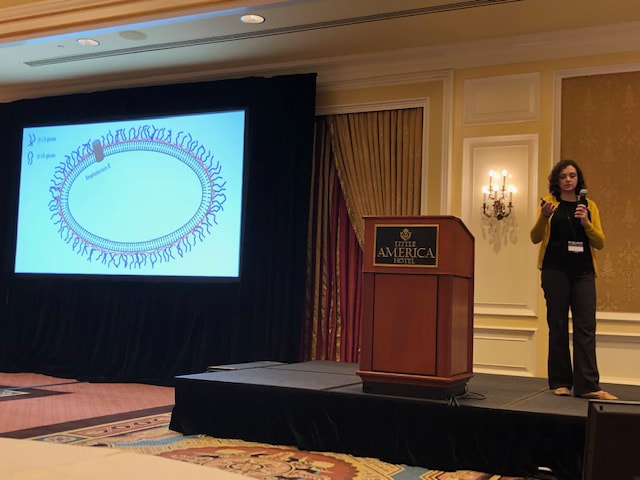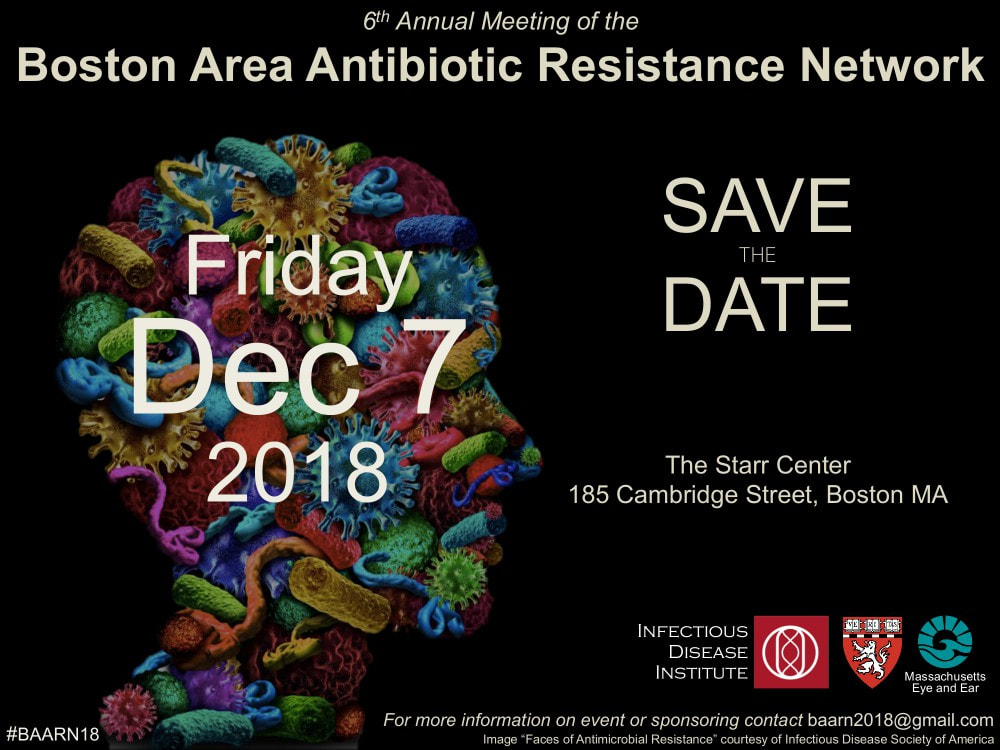|
Our latest manuscript: "Synergistic combinations and repurposed antibiotics active against the pandrug-resistant Klebsiella pneumoniae Nevada strain." Antimicrobial Agents and Chemotherapy early release identifies:
Highly synergistic activity of several antimicrobial combinations. Low apramycin and spectinomycin MIC values. CDC previously reported that none of 26 antimicrobials they tested were active against the Nevada strain. That made the strain until now pandrug-resistant. Links to several news articles about this pandrug-resistant strain:: The Atlantic. NPR, NBC, PBS. Forbes
0 Comments
BIDMC press release on poster presented by postdoctoral fellow, Thea-Brennan Krohn, at the ASM Microbe Meeting in San Francisco this past weekend!
https://www.bidmc.org/about-bidmc/news/2019/06/combination-of-drugs-may-combat-deadly-drugresistant-fungus "Using the inkjet technology to dispense uniform samples of C. auris into each of the 96 wells in a standard lab testing plate, Brennan-Krohn tested 10 combinations against 10 strains of C. auris, a painstaking process that would have taken at least 50 hours if done by hand. It took less than two hours in total using the inkjet dispenser for Brennan-Krohn to find three novel combinations of antifungal and antibacterial drugs that demonstrated activity against this insidious new pathogen." There is a very fancy drawing of a single cell life form on the slide undoubtedly being compromised by a combination of antimicrobial therapeutics applied in Thea, Liam, and Sarah's experiments!
Adopted by the CDC .in their Antimicrobial Resistance Laboratory Network based on our prior publications in Journal of Clinical Microbiology, Journal of Antimicrobial Chemotherapy, and Antimicrobial Agents and Chemotherapy for testing of aztreonam/ceftazidime-avibactam combination activity using inkjet printing. We provide a step by step video demonstration of assay setup in the Journal of Visualized Experimentation. Link to article landing page (PDF protocol access and video), "Antimicrobial Synergy Testing by the Inkjet Printer-assisted Automated Checkerboard Array and the Manual Time-kill Method" by Thea Brennan-Krohn and James E. Kirby.
ASM has reorganized their website. Their blogs are now impossible to find, They are now organized under author pages. Blogs from current and former research and/or clinical fellows:
KP Smith's blogs can be found at: www.asm.org/Biographies/Kenneth-(K-P-)-Smith Rose Lee's blogs can be found at: www.asm.org/Biographies/Rose-Lee Thea Brennan-Krohn's blogs can be found at: www.asm.org/Biographies/Thea-Brennan-Krohn Jennifer Tsang's blogs can be found at: www.asm.org/Biographies/Jennifer-Tsang The ASM Peggy Cotter Travel Award Program provides funds for early career branch members, in this case, the ASM Northeast Branch, to attend the ASM Microbe Meeting, to be held this year in San Francisco, CA. Kate will be presented her work on a small molecule screen to evict CRE resistance plasmids.
"New Treatment Options against Carbapenem-Resistant Acinetobacter baumannii Infections" cites our murine apramycin PK/PD studies and activity spectrum studies against "CRAB.".
New antibiotics that may offer additional and much needed treatment options will only be used in hospital systems if the clinical microbiology laboratory can provide timely antimicrobial susceptibility testing data. Historically there has been a time lag in the availability of susceptibility testing methods either at reference laboratories (long delay to results), incorporation in automated commercial systems (4 years), or simpler methods like disk diffusion and gradient strips that can be performed manually on an as needed basis. I was excited to learn that delafloxacin and meropenem/vaborbactam disk diffusion and gradient strip methods finally became available. Fantastic. However, before we can introduce those methods in the clinical laboratory, we need to validate performance of these methods per CLIA '88 regulations and good laboratory practice. This requires either comparing the new methods to a reference standard (broth microdilution -- need antibiotic powder, and a lot of set up time) or a set of strains that has been previously characterized by a reference dilution method and has a good representation of susceptible and resistant isolates. Those are serious roadblocks. By chance, I happened to give a talk at the Northeast Branch of the American Society of Microbiology and a someone from Melinta Pharmaceuticals happened to be there, and that someone referred me to our local Key Account Manager who offerred a solution "on request". Specifically, Melinta or other pharmaceutical companies are not allowed to approach me and tell me about a solution, but if I inquire independently and ask for a previously characterized set of bacterial isolates, they are allowed to tell me that in fact they have a series of previously characterized isolates for both drugs available for validation. These isolates are provided free of charge from Laboratory Specialist, Inc, Sent by FEDEX with first class documentation, data for broth microdilution performed circa ten times on each isolates with modal MICs and MIC distribution - wow, that is awesome. Methods validated beautifully. It just seems odd to me that such a valuable resource, providing clinical laboratories the ability to robustly evaluate AST methods for newly marketed drugs, needs to remain on a need to know basis. Clinical labs, please take note of this available resource. The same proved to be true for plazomicin. Achaogen uses the same Laboratory Specialists, Inc. to provide 30 characterized isolates on request; however, the FEDEX chargers are not absorbed. The FDA-CDC Biobank also now has a set of isolates characterized for plazomicin susceptibility and I see now also delafloxacin., I suspect the exact same set of organisms. The existing rule restricting such company-clinical laboratory communication about these important resources should be relaxed! We need facile access to validation strains sets to bring new testing into our laboratories in a timely fashion, to facilitate the availability of new antibiotics when they are most needed, and to help support profitability of antibiotic development by pharmaceutical companies.
Apramycin scaffold exploration using novel glycochemistry and SAR studies to enhance activity against Acinetobacter baumannii and other multidrug-resistant Gram-negative pathogens.
George O'Doherty |
Kirby Lab Blog Categories
All
Archives
July 2024
|



 RSS Feed
RSS Feed